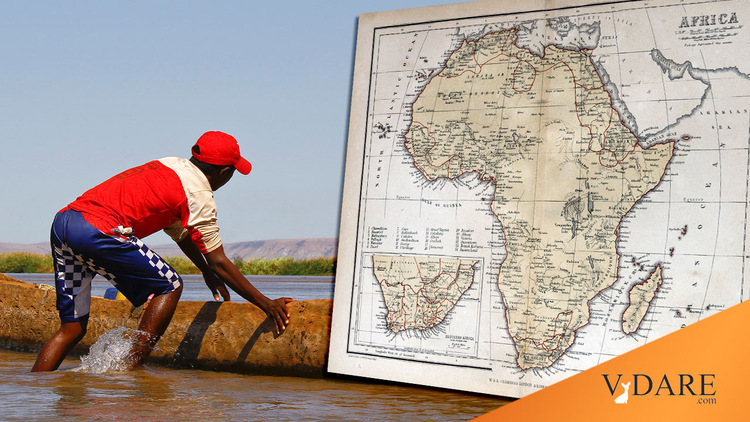


02/09/2024

What’s the furthest island off the coast of sub-Saharan Africa that black Africans got to first?
Sub-Saharans were not ultra-adventurous blue ocean mariners like the Polynesians, but at least West Africans had decent ocean-going canoes for coastal trade.
The furthest island I’ve found so far is Fernando Po off the coast of Cameroon in West Africa. It’s about 20 miles offshore and when the Portuguese got there in the 15th century, they found it inhabited by Bantu speakers. Presumably they arrived from the mainland. During the Ice Age, you could walk to Fernando Po (now known as Bioko), but if the inhabitants had been stuck on the island for 10,000 years, like the Tasmanians were, their language wouldn’t be Bantu because that’s too long of a divergence.

Another possible candidate was Soqotra, which is about 150 miles off the Horn of Africa in the Indian Ocean. Soqotra is a desert island with crazy Dr. Seuss-like trees.
David Reich’s ancient DNA lab has now checked into that possibility. From Nature Ecology & Evolution:
Kendra Sirak, Julian Jansen Van Rensburg, Esther Brielle, Bowen Chen, Iosif Lazaridis, Harald Ringbauer, Matthew Mah, Swapan Mallick, Adam Micco, Nadin Rohland, Kimberly Callan, Elizabeth Curtis, Aisling Kearns, Ann Marie Lawson, J. Noah Workman, Fatma Zalzala, Ahmed Saeed Ahmed Al-Orqbi, Esmail Mohammed Ahmed Salem, Ali Mohammed Salem Hasan, Daniel Charles Britton & David Reich
Nature Ecology & Evolution (2024)CAbstract
Soqotra, an island situated at the mouth of the Gulf of Aden in the northwest Indian Ocean between Africa and Arabia, is home to ~60,000 people subsisting through fishing and semi-nomadic pastoralism who speak a Modern South Arabian language. Most of what is known about Soqotri history derives from writings of foreign travellers who provided little detail about local people, and the geographic origins and genetic affinities of early Soqotri people has not yet been investigated directly.

Here we report genome-wide data from 39 individuals who lived between ~650 and 1750 CE at six locations across the island and document strong genetic connections between Soqotra and the similarly isolated Hadramawt region of coastal South Arabia that likely reflects a source for the peopling of Soqotra. Medieval Soqotri can be modelled as deriving ~86% of their ancestry from a population such as that found in the Hadramawt today, with the remaining ~14% best proxied by an Iranian-related source with up to 2% ancestry from the Indian sub-continent, possibly reflecting genetic exchanges that occurred along with archaeologically documented trade from these regions.
In contrast to all other genotyped populations of the Arabian Peninsula, genome-level analysis of the medieval Soqotri is consistent with no sub-Saharan African admixture dating to the Holocene.
The deep ancestry of people from medieval Soqotra and the Hadramawt is also unique in deriving less from early Holocene Levantine farmers and more from groups such as Late Pleistocene hunter–gatherers from the Levant (Natufians) than other mainland Arabians. This attests to migrations by early farmers having less impact in southernmost Arabia and Soqotra and provides compelling evidence that there has not been complete population replacement between the Pleistocene and Holocene throughout the Arabian Peninsula. Medieval Soqotra harboured a small population that showed qualitatively different marriage practices from modern Soqotri, with first-cousin unions occurring significantly less frequently than today.